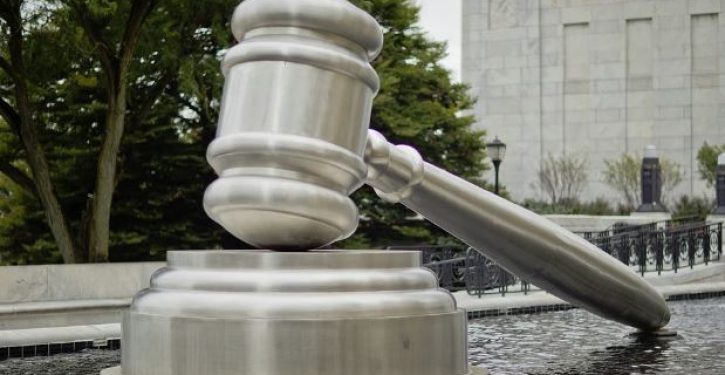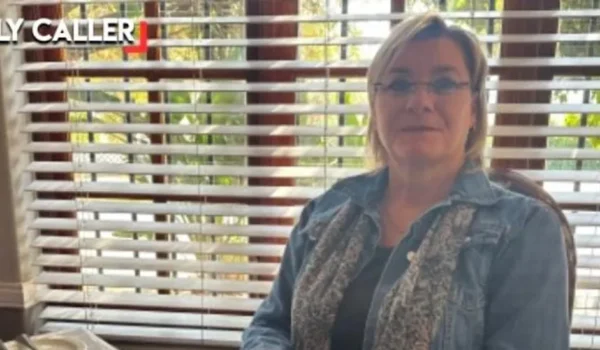
“Woman accused of being a witch in Brazil can seek asylum in U.S., court rules.” That’s the title of a news article about a ruling that the Ninth Circuit Court of Appeals issued yesterday.
It’s not the government of Brazil that accused her of being a witch, but her neighbors. Being a witch is not a crime in Brazil. But De Souza Silva’s neighbors were hostile to her, and she experienced discrimination for being a witch. Her neighbors thought she was a witch because she practiced Candomblé, an Afro-Brazilian religion that invokes spirits, and thus is seen by some as black magic or witchcraft. The government of Brazil recognizes that Candomblé is a religion protected by the Brazilian constitution’s religious-freedom guarantees.
Since it wasn’t the government of Brazil that was persecuting her, but local people, one would think that she could move to a different part of Brazil that is less hostile to witches. The government of a country can be found anywhere in it, but your abusive neighbor can’t. Brazil is one of the world’s biggest nations, with an area of over 3 million square miles, with remote jungle areas and plateaus.
So in a sensible world, she couldn’t seek asylum in the United States when there were probably safe places to move to in Brazil. Partly for that reason, the Board of Immigration Appeals (BIA) denied her application for asylum. As the appeals court noted, “The BIA denied De Souza Silva’s application for asylum, holding that she had not experienced past persecution and that she lacked a well-founded fear of future persecution because she could safely and reasonably relocate within Brazil.”
But the appeals court ruled that she had experienced past persecution by her neighbors, and ruled that she presumptively did not have to move to a different area of Brazil, before coming to the United States.
In 2020, the Trump administration adopted a common-sense regulation that people should internally relocate to another part of their own country before seeking asylum in the U.S., if it is not the government of their country that is persecuting them.
But the appeals court did not follow that regulation, because the official in the Trump administration who approved that regulation wasn’t validly appointed by President Trump as required by the Constitution’s appointments clause. Instead, the appeals court followed a regulation left behind by the Obama administration, which said that past persecution creates a presumption that internal relocation is unreasonable, even when the persecution is by private citizens in a local area, not the government of a whole country.
As the appeals court, located in San Francisco, explained,
We note that in December 2020, the relevant asylum regulation was amended to create a “presumption that internal relocation would be reasonable” whenever, as is the case here, the persecutor is “not the government or a government-sponsored actor.” 8 C.F.R. § 1208.13(b)(3)(iii); see Procedures for Asylum and Withholding of Removal; Credible Fear and Reasonable Fear Review, 85 Fed. Reg. 80,274, 80,281 (Dec. 11, 2020) (describing the new internal relocation amendments).
However, there is an injunction in effect preventing the implementation, enforcement, and application of the December 2020 amendments to the regulation. See Pangea Leg. Servs. v. U.S. Dep’t of Homeland Sec., 512 F. Supp. 3d 966, 977 (N.D. Cal. 2021); Ullah v. Garland, 72 F.4th 597, 603 n.3 (4th Cir. 2023). The Pangea “order remains in effect, and thus the 2020 version of these provisions—the version immediately preceding the enjoined amendment[s]—is currently effective.” Securing the Border, 89 Fed. Reg. 81,156, 81,171 n.79 (Oct. 7, 2024); see Ullah, 73 F.4th at 603 n.3. Under the effective version of the provisions, even if her persecutors are not government or government-sponsored actors, a past persecution determination would entitle De Souza Silva to a presumption that internal relocation would be unreasonable. See 8 C.F.R. § 1208.13(b)(3)(ii) (2020).
Accordingly, the BIA’s internal relocation determination…does not provide an independent basis for its decision, and remand to the agency is required.
This case illustrates a common phenomenon: the Trump administration trying to fix a dumb progressive policy left behind by a previous Democratic administration, but failing to fix it because the Trump administration didn’t go by the book, and didn’t understand the procedures legally required to revise federal regulations.
As a result, a foreigner who probably had no need to come to the U.S. will be able to stay in the U.S. for years longer and force the government to waste lots of time processing her bogus asylum claim, when she could simply have moved to a different part of Brazil and lived there safely.
The Trump administration often procedurally bungles attempts to get rid of left-wing policies.
Trump’s useful deregulatory reforms in 2017-19 were mostly overturned by the courts — 93% of them, in whole or in part. Many of the Trump losses were due to ineptness by Trump appointees in drafting the Trump changes, such as procedural mistakes and sloppiness. Some of the losses were due to left-wing activist judges.
Trump talked about “draining the swamp,” but most of the time, he didn’t really know how. You can’t drain the swamp without the help of someone who knows the swamp well (like knowing administrative law and procedure). Trump never got that expertise. He didn’t hire most of the right people. If you want to fix bad government rules and red tape, you have to hire experts, know what you are doing, and be patient until you get it right.
Florida Governor Ron DeSantis would have been much better at draining the swamp. So would Senator Tom Cotton (R-Ark.). These highly-intelligent men understand the law and administrative procedure and how to run a bureaucracy. Trump didn’t. He paid little attention to the rules and processes of governing.
An administration can’t just suddenly change most regulations, even if they are bad. It usually has to go through the procedures mandated by the Administrative Procedure Act, such as “notice and comment,” before pulling even a bad regulation. These procedures are detailed and time-consuming, but if they are ignored, someone can sue the government to overturn its regulatory changes, as often happened during the Trump administration. The new regulation has to be approved by a federal official properly appointed in the manner required by the Constitution’s Appointments Clause.
Due to its lack of understanding of administrative law, the Trump administration failed to rescind most of the burdensome rules and regulations imposed during the Obama administration, which imposed a flood of rules and regulations on American business and our educational sector, harming economic growth and driving up costs to consumers and students.
The first Trump administration repealed many of the bad rules, but often in procedurally improper or sloppy ways that led to judges blocking the rules changes and reinstating the bad rules.
On the bright side, most agencies stopped issuing burdensome rules and regulations in Trump’s first administration, heeding instructions from the White House. That kept things from getting even worse, the way they had under the Obama administration. And it enabled a long economic recovery to continue, contrary to the predictions of some economists that a recession was inevitable and overdue given how long the economic recovery had been underway.



